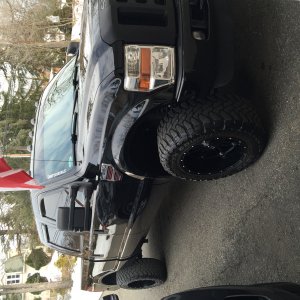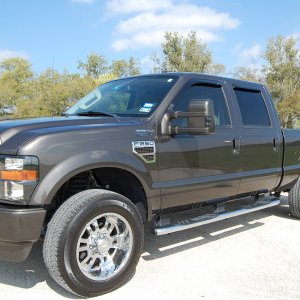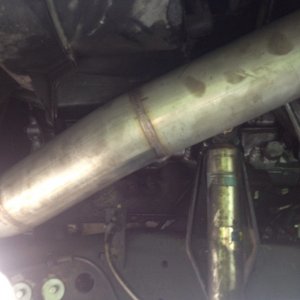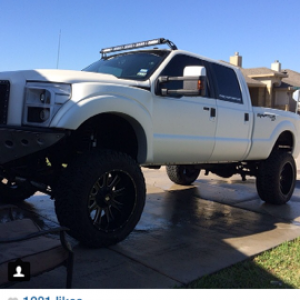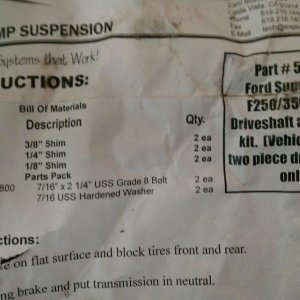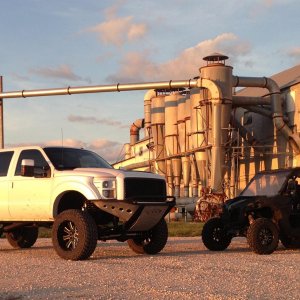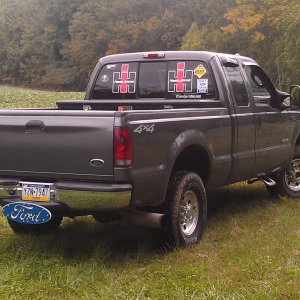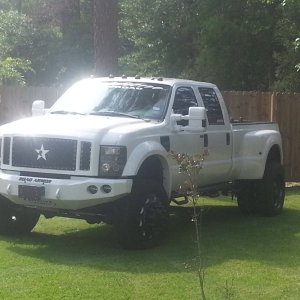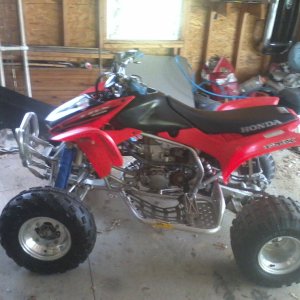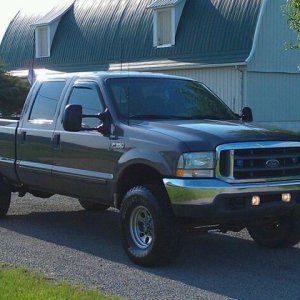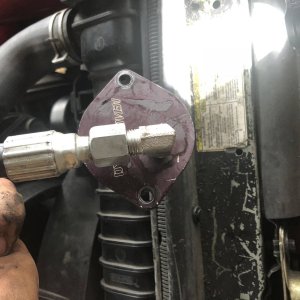Thanks guys!!! BTW, I'll be ordering the pistons come Monday.... Once I get all the parts collected then it'll be off to the machine shop. The order in which all of this will need to happen is, the mains caps on the block will receive studs in place of the stock main cap bolts. Now to be completely honest, main studs are really not needed at this level but they're not too expensive and me being from the Hot Rod go Fast world this is just an area we always throw studs in so why break that habit now??? So with new studs it will necessary to have the mains line honed. This is because the new and different type fasteners puts a slightly different stress on the main saddles which so it's always best to have it line honed when doing so. Plus it's always good to have this done anyways for a peace of mind knowing that this area is nice and round, true and inline with each other!!! And from there the block will get placed in the cylinder block CNC machine and all the following machining processes from here forward will be doneon this machine as it references everything off of the block's crankshaft centerline. This assures everything will now be square and true with the crankshaft.... All eight cylinders will get bored and honed to fit the new pistons which I believe they are going to be .5mm or .020 oversized. Now ultimately it's good to do the honing with a torque plate attached to the cylinder block to reproduce the same stresses the heads do when they are torqued down on the block. This stresses the cylinder bores and leaves them out of round where the head studs pull the bores out of shape. Doing this really, really helps with the rings sealing to their now new nice and SUPER ROUND bores!!! Now I'm not sure if this machine shop has a torque plate for the 6.7 or not, so that one I'm going to have to check on to see. If not, I have a good friend who owns a regular machine shop and I'll either use his knee mill to make one if need be or just have him do one on his fancy four axis CNC machine. Anyways, once all the boring and honing is complete then it'll be to resurface the the two decks. What this does is ensures both decks are square and level with the crankshaft front to back and side to side. Also in doing so, the surface roughness can be tailored to whatever the head gasket manufacturer suggests for optimal sealing per their gaskets.
Ok, with all that done now I'll know exactly what the deck heights are. This is the distance from the crankshaft centerline to the tops of each of the decks. You want those to be exactly the same!!! Now I don't what the stock deck height is for these 6.7s, I've been having a helluva time trying to find any details on these blocks, so if any of you guys have that or know where to find it and would like to share that, man that would be very much appreciated!!! Since I don't have that as of yet, let's just for the sake of it use for an example of a stock LS motor, which is the latest small block Chevrolet. Sorry about that my Blue Oval brothas, but these motors I do know so I'll just use that just for an example. Anyways the LS deck heights are supposed to be at 9.240. So let's say we're having one of those blocks decked. Now one side may be 9.239 and the other is 9.237. Well, with that the machinist is going to have to bring both to the same height, so it's going to have to be less than that 9.237, with it being the lowest side... We can always take away but not add, so that's why the lower side. Now let's just say the machinist makes a pass and it cleans up and leaves us a deck height of 9.235, then the other side needs to be cut down to match this deck height of 9.235 as well. Now once that's done we have two decks that are to be said square with the crankshaft centerline!!! And it is this number I'm going to need which will be very important when I have the crankshaft rod journals turned down. All it takes is the measurements and little bit of math and I should end up right where I need to be. A stronger rod with the 6.0 rods fitted in a 6.7 engine. I don't know if I mentioned this or not, but the 6.0 rods do have a smaller rod journal than the 6.7s. This is why the crankshaft rod journals need to be turned down. And that being somewhere just over 100 thousands of an inch. And not only that but the 6.7 rods or a tad bit longer. So all this needs to be taken into account to make sure we have a piston that comes out the hole just as it did with the 6.7 rods. Also the 6.0 rods have little bit thicker ends (about .030) at the rod journals than 6.7s so those will have to be surfaced down a bit as well.....
So yeah, this may look a bit intimidating to most, but trust me guys in the Hot Rod world guys have been manipulating small and block engines of all makes for a long, long, long time. This is nothing new. You just have to have all the details correct and some good machine work and you can make magic happen!!!!
Once I get all my parts together and I get it over to the machine shop I'll see if those guys don't mind me taking some pictures of the machining work as it's being done and I'll post them all here to share with you guys.....
Again, if anyone sees anything I that I may have wrong here, you're more than welcome to speak up. But then again, if you're just one of those guys that just hates to see someone else doing a little something outside of your own capabilities and you just feel the need to talk chit, well then please just keep your negativity to your own pathetic self!!! Now I don't know if I could have said that any nicer..... I'm always willing to learn and always willing to share in doing so, and I think there's plenty folks who just may appreciate that...So let's see if we can keep this civil and have some fun along the way!!! :naughty:
Thanks again, and may the Blue Oval always be with you!!!:ford:

